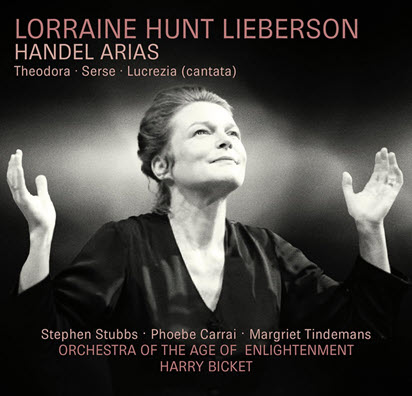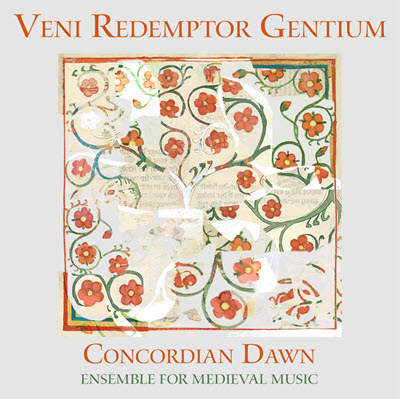by Jeffrey Baxter
Published November 3, 2025
Brahms: Ein deutsches Requiem, Op. 45 Pygmalion, soprano Sabine Devieilhe, baritone Stéphane Degout, conducted by Raphaël Pichon. Recorded December 2024. Harmonia mundi HMM902772
Perhaps for the first time, we can hear what Brahms imagined: the memory of a 17th-century Schütz motet, filtered through 19th-century Romanticism

Raphaël Pichon and his period instrument ensemble, Pygmalion, present Brahms’ epic A German Requiem in their latest recording, beautifully captured in the warm acoustic of the large Boulez Hall of the Paris Philharmonie. The French conductor and his group have garnered much attention, including their award-winning Bach B-minor Mass recording (Gramophone’s 2025 Recording of the Year and recently reviewed by EMA), and some unusual “immersive” endeavors such as semi-staged versions of the Monteverdi Vespers and Mozart Requiem, and a Brahms Requiem set in a Nazi-era submarine base, with the choir roaming the audience.
For this Brahms recording, the 4-part chorus is represented by 38 voices [11-9-9-9] which at first seems an ensemble barely large enough to handle the tutti sonorities required by Brahms. However, Pichon’s choices of orchestra-size and distribution help, including — among the specified winds — a manageable contingent of 36 strings [9-8-7-7-5], an ophicleide (for tuba), and a single harp (marked as possibly doubled in Brahms’s score).
With the first movement clocking in at 10:44, this reading at first seems more reminiscent of a Karajan-type Adagio of bygone days. The dangerously slow tempo is almost unsustainable, but with Pygmalion’s careful string-bowing and choral breath control, the effects are stunning. Even though it is sometimes shocking to modern ears to hear such vibrato-less playing sustained past these famous opening measures (along with a close mic-placement that does little favors to a unified string sonority), at the entry of Pichon’s expert chorus — and the gentle tone of the period woodwinds that include wooden flutes, natural horns, and narrow-bore brass — all doubts are dispelled.
It is, however, interesting to ponder that the sound of these 19th-century instruments to modern ears now seems “period.” Aside from the natural horns, they were of course “modern” to Brahms and the late 19th century. Heard in this context, in a modern hall, performed by 21st-century historically informed specialists, perhaps one is best able to realize in hindsight what Brahms imagined in this opening movement: the memory of a 17th-century Schütz motet through the filter of 19th-century Romanticism.
For the second movement’s novel three-quarter time funeral march, “Denn alles Fleisch es ist wie Gras,” Pichon wisely elects a less leisurely pace and builds a forward momentum of gripping tension and breathless inevitability.
Unfortunately, in that second movement — as in other parts of Pichon’s reading of this Requiem — the added effect and color of Brahms’s organ part (marked “ad lib.”) is sadly lacking. Pichon’s superbly paced build-up and then released tension of the first tutti fortissimo statement of “Denn alles Fleisch” — along with its dramatically delivered timpani strokes — would have equally benefited from the 16-foot sonority of the organ pedal-point. Not only here, but also where Brahms specified the organ’s color: in the otherworldly hushed opening measures of Movement I, the foundational pedal-D that undergirds the finale of Movement III, the mysterious underpinning of the chorus’ response to the baritone’s “Geheimnis” of Movement VI and, later, the glorious tutti outburst of “Wo? Wo? Wo ist dein Sieg?” that would lift these inspired moments of Brahms to another level.
Fortunately, the star of this recording — indeed the linchpin of any good Brahms Requiem recording — is its chorus. Though only 38 in number, they deliver in every aspect: in rhythmic precision and excellent German diction, turning on a dime from a hushed pianissimo to a thundering fortissimo — all while never losing a unified core of sound. Part of this surely must be due to careful recording engineering (kudos to Harmonia mundi for this sensitivity to balance and presence), but mostly it is the obvious technique and discipline of this finely tuned ensemble that allows it to shine at every moment.
In Movement III, some exceptional singing may be heard in baritone Stéphane Degout’s delivery of the hushed repeat of “Herr, lehre doch mich” (at ms. 67). It makes his crescendo’d cry a few measures later of “und ich davon muß” (and I must perish) on a forte high F even more devastatingly forlorn.
While the choral singing of Movement IV’s “Wie lieblich sind deine Wohnungen” remains unmatched, it is a great delight to experience such orchestral detail on every page, so often unobtainable in live performance: the gentle string pizzicato and the individual woodwind contributions, including the often-lost detail of the 2nd Horn’s arpeggiated low descent at m. 89. This is accomplished in part by the skillful, recorded engineering and partly by the distinct sonority of these period instruments. It is a joy to hear.
Again, in what could be a dangerously slow attempt at Brahms’ “Langsam” tempo-indication in Movement V, Pichon and his performers shine in a seamless legato in “Ihr habt nun Traurigkeit.” Sabine Devieilhe’s clarion soprano (with an impressive breath-control) shimmers and floats above the chorus in effortless long lines. She achieves an almost impossible pianissimo in her hushed final echo of “wieder sehen.”
Movement VI’s steadily plodding pizzicato cortège, “Denn wir haben hie keine bleibende Statt,” is disrupted by an unmarked and slightly jarring premature tempo increase by Pichon at the first key-change (at m.32, “Wir werden nicht alle entschlafen”). Brahms does not indicate an accelerando until ms. 68, at “zu der Zeit der letzten Posaune.” Also, towards the end of this movement, Pichon in his urgency doesn’t quite catch Brahms’s intended metric modulation at “Herr, du bist würdig,” where groupings of the previous three eighth notes become the tactus in the following fugue.
Brahms’ tempo indication of “Feierlich” for the final movement should be understood as “solemnly,” not “festively,” as Pichon’s slightly rushed tempo sounds. In live performance these are certainly the hardest lines to sustain for even the most robust of choruses, and a quicker tempo can certainly aid flagging singers. However, such a hasty approach can diminish the gravitas of Brahms’ final statement.
Pichon’s solution is in taking the liberty (not indicated by the composer) to slow down at “Ja, der Geist spricht,” to set up the more restful atmosphere for “daß sie ruhen von ihrer Arbeit.” In what follows, Pichon is at least consistent in this attempt at tempo rubato by restoring his original opening too-quick tempo at the reprise of “Selig sind die Toten.” This free approach of “paying Peter by robbing Paul” is not indicated by the composer and detracts a bit from the commendable music-making found here and throughout the entire performance. Still, it is a balanced choice and is not enough to diminish one’s enjoyment and appreciation of these gifted musicians’ compelling approach. And in all, I believe this to be perhaps the finest recording of the Brahms German Requiem in many decades.
Jeffrey Baxter is a retired choral administrator of the Atlanta Symphony Orchestra, where he managed and sang in its all-volunteer chorus and was an assistant to Robert Shaw. He holds a doctorate in choral music from The College-Conservatory of Music of the University of Cincinnati and has written for BACH – The Journal of the Riemenschneider Bach Institute, The Choral Journal, and ArtsATL. For Early Music America, he recently reviewed a shimmering mirage from the Kansas City Chorale.




